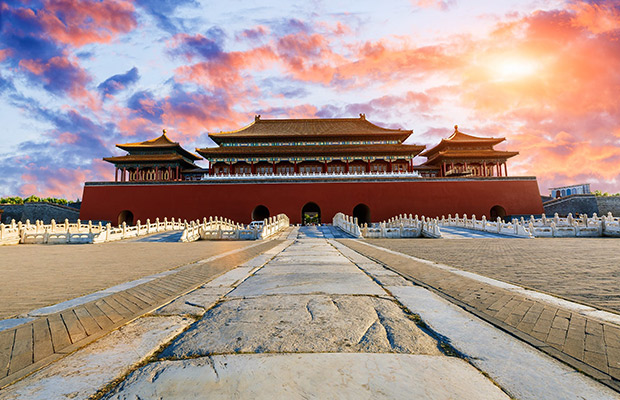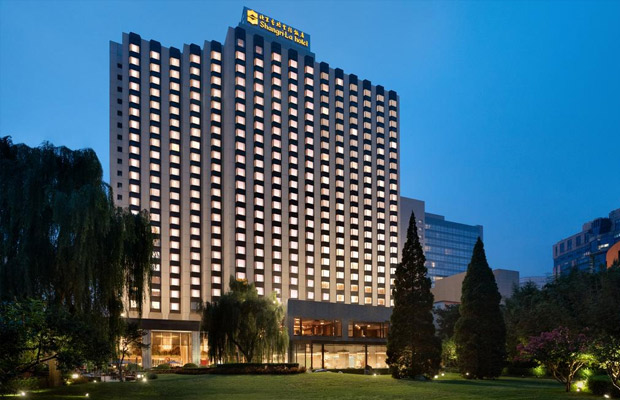Forbidden City
Forbidden City
China
Beijing
Beijing Travel Guide
Book Tour & Activities
Your tour in Beijing.
Book your stay
Your hotel in Beijing.
Overview
Get a thorough intro to the Forbidden City: facts, location, entry tickets, open hours, size, Chinese names, history, when built, layout, map, features...
The Forbidden City is the palatial heart of China. Constructed in 1420, during the early Ming Dynasty, it is China's best-preserved imperial palace, and the largest ancient palatial structure in the world.
As one of the five most important palaces in the world, the grand halls and walls proudly display the essence and culmination of traditional Chinese architecture, fitting for the capital city of the world’s largest nation.
The Forbidden City is a palace complex in central Beijing, China. It houses the Palace Museum, and was the former Chinese imperial palace from the Ming dynasty to the end of the Qing dynasty (the years 1420 to 1912). The Forbidden City served as the home of emperors and their households and was the ceremonial and political center of Chinese government for almost 500 years.
Constructed from 1406 to 1420, the complex consists of 980 buildings and covers 72 hectares (over 180 acres). The palace exemplifies traditional Chinese palatial architecture, and has influenced cultural and architectural developments in East Asia and elsewhere. The Forbidden City was declared a World Heritage Site in 1987, and is listed by UNESCO as the largest collection of preserved ancient wooden structures in the world.
Since 1925, the Forbidden City has been under the charge of the Palace Museum, whose extensive collection of artwork and artifacts were built upon the imperial collections of the Ming and Qing dynasties. Part of the museum's former collection is now in the National Palace Museum in Taipei. Both museums descend from the same institution, but were split after the Chinese Civil War. Since 2012, the Forbidden City has seen an average of 14 million visitors annually, and received more than 16 million visitors in 2016 and 2017.
Name
The common English name "Forbidden City" is a translation of the Chinese name Zijin Cheng (Chinese: 紫禁城; pinyin: Zǐjìnchéng; literally: 'Purple Forbidden City'). The name Zijin Cheng first formally appeared in 1576. Another English name of similar origin is "Forbidden Palace".
The name "Zijin Cheng" is a name with significance on many levels. Zi, or "Purple", refers to the North Star, which in ancient China was called the Ziwei Star, and in traditional Chinese astrology was the heavenly abode of the Celestial Emperor. The surrounding celestial region, the Ziwei Enclosure (Chinese: 紫微垣; pinyin: Zǐwēiyuán), was the realm of the Celestial Emperor and his family. The Forbidden City, as the residence of the terrestrial emperor, was its earthly counterpart. Jin, or "Forbidden", referred to the fact that no one could enter or leave the palace without the emperor's permission. Cheng means a city.
Today, the site is most commonly known in Chinese as Gùgōng (故宫), which means the "Former Palace". The museum which is based in these buildings is known as the "Palace Museum" (Chinese: 故宫博物院; pinyin: Gùgōng Bówùyùan).
History
- The construction of the grand palace started in the fourth year of Emperor Yongle of the Ming Dynasty (1406), and ended in 1420.
- From 1420 to 1644, the Forbidden City was the home of 14 emperors of the Ming Dynasty.
- From October 1644, the Forbidden City served as the imperial palace of the Qing Dynasty.
- In 1860, during the Second Opium War, the Forbidden City was controlled by Anglo-French forces and occupied until the end of the war.
- From 1912, the Forbidden City was no longer home to the emperor with the abdication of Puyi, the last Emperor of China.
- In 1925, the Forbidden City became the Palace Museum.
- It was named a UNESCO World Heritage Site in 1987.
10 Numbers to Describe the Forbidden City
- The Forbidden City took 14 years to build (from 1406 to 1420).
- It was built by over 1,000,000 workers, including more than 100,000 craftsmen.
- It was the imperial palace of China for 492 years (1420–1912).
- It was the home of 24 emperors — 14 of the Ming dynasty and 10 of the Qing dynasty
- It covers 0.72 sq km (0.28 sq mi), of which 15 hectares (38 acres) are floor area.
- It has 980 buildings in over 70 palace compounds, with over 8,700 rooms.
- It is 961 meters long from south to north and 753 meters wide.
- It is surrounded by a 10-meter-high wall, which is 3.4 km (2 miles) long.
- It has a 52-meter wide moat round it.
- It hosts 14 million visitors per year, a maximum of 80,000 visitors per day.
Fast Facts about the Forbidden City
- Most outstanding feature: It’s the largest imperial palace in the world.
- Things to see: imperial living and governing quarters, valuable artworks, and traditional gardens
- Time needed: at least 2–3 hours
- Location: the center of Beijing, north of Tian’anmen Square
- Open: 8:30am–5:30pm or 8:30am–5pm off-peak; closed on Mondays
- Entry: 60 yuan April–October; 40 yuan November–March
The Layout of the Imperial Palace
Forbidden City map, The Forbidden City, Beijing, China
The Forbidden City covers an area of about 72 hectares (180 acres) with a total floor space of approximately 150,000 square meters (1,600,000 square feet).
It consists of more than 90 palaces and courtyards, 980 buildings and over 8,728 rooms. (A common myth states that there are 9,999.5 rooms, but it is not supported by survey evidence.)
The Forbidden City falls into three parts: the defenses (moat and wall), the Outer Court and the Inner Court.
The Forbidden City
- Address: 4 Jingshan Front St, Dongcheng, Beijing, China, 100886
- Opening Hours: 8:30am–5:30pm or 8:30am–5pm
- Architectural style(s): Chinese architecture
- Built: 1406–1420
- Architects: Nguyễn An, Kuai Xiang, Cai Xin
Video Travel Inspiration
See Forbidden City on Map
Most Popular Cities

Siem Reap
Cambodia
Ho Chi Minh City
Vietnam
Beijing
China
Paris
France
London
United Kingdom
New York
USA
Tokyo
Japan
Bangkok
Thailand
Seoul
South Korea
Vientiane
Laos
Yangon
Myanmar
Washington DC
USA
Los Angeles
USA
Ottawa
Canada
New Delhi
India
Singapore
Singapore
Kuala Lumpur
Malaysia
 English
English French
French Khmer
Khmer Thai
Thai Vietnamese
Vietnamese Chinese
Chinese Korean
Korean German
German Japanese
Japanese Italian
Italian Russian
Russian Spanish
Spanish Dutch
Dutch Indonesian
Indonesian Malay
Malay


































